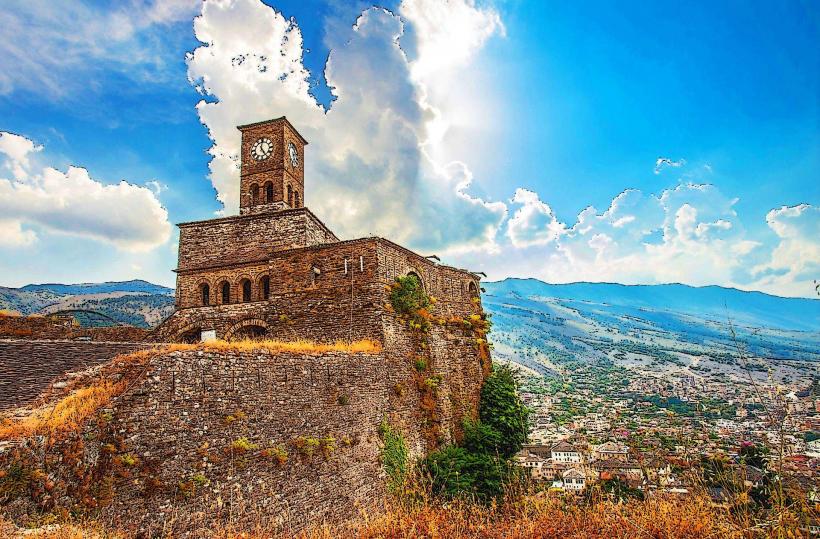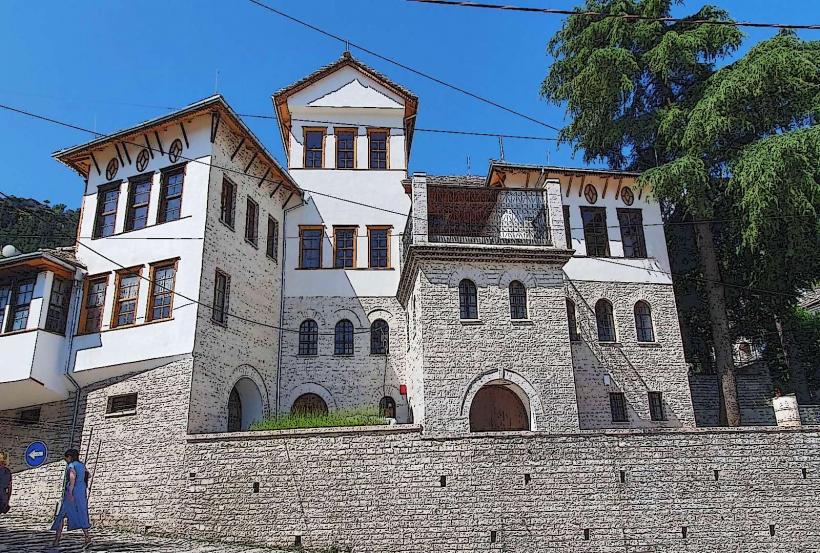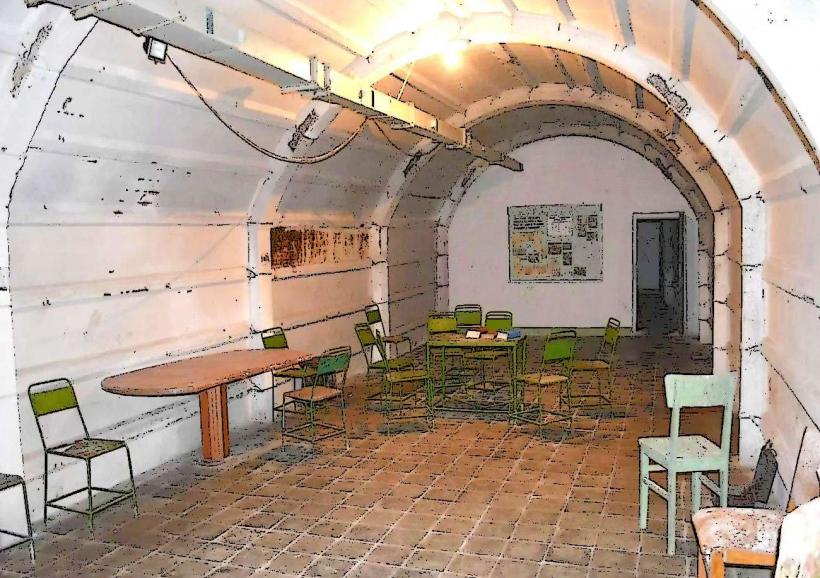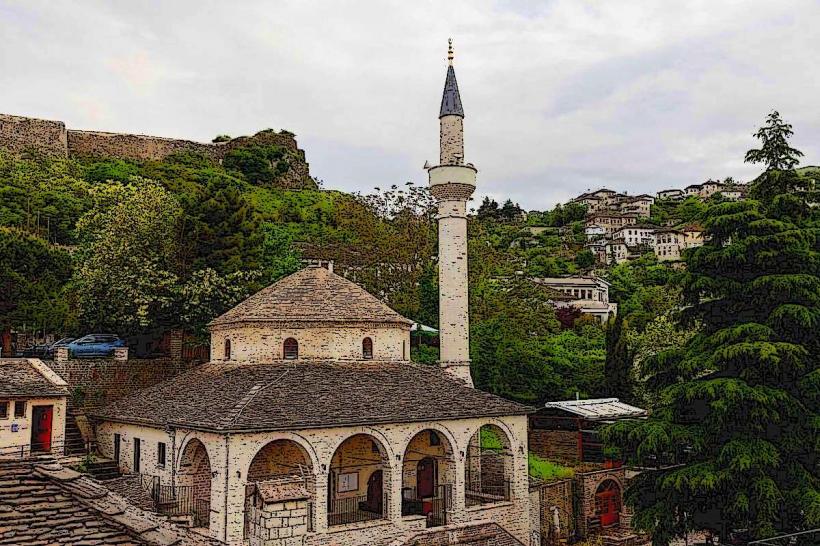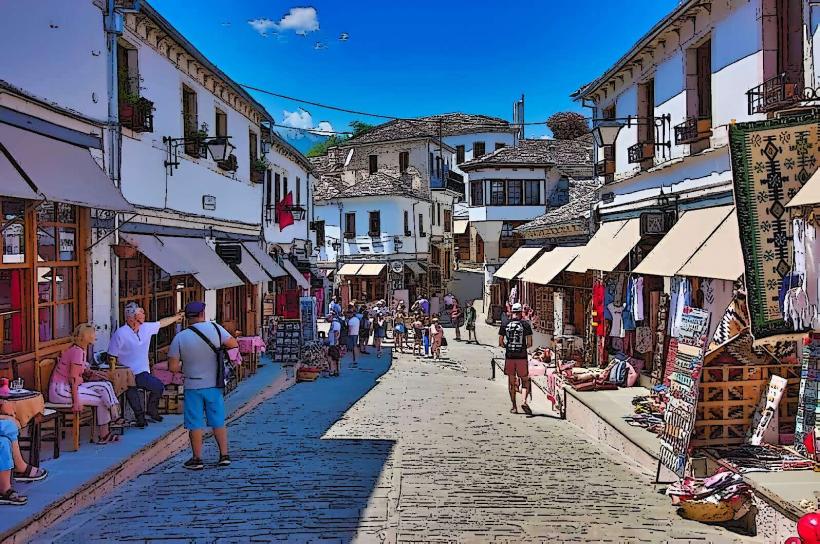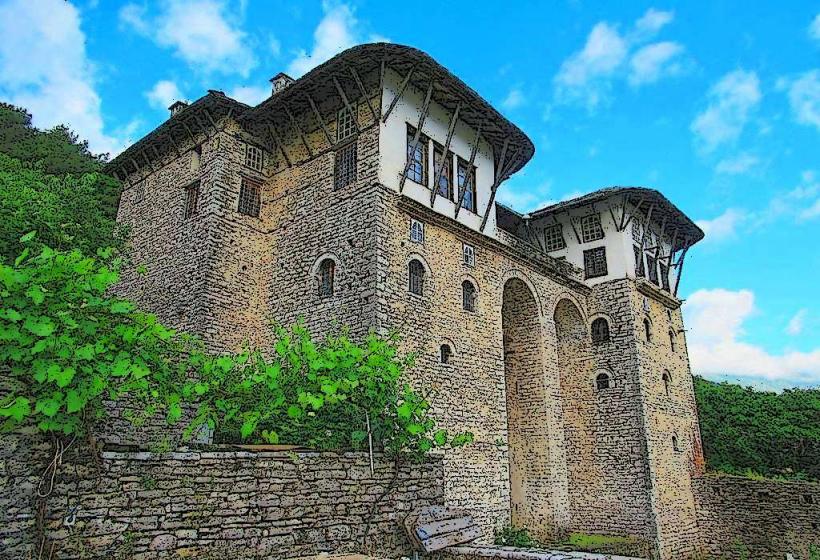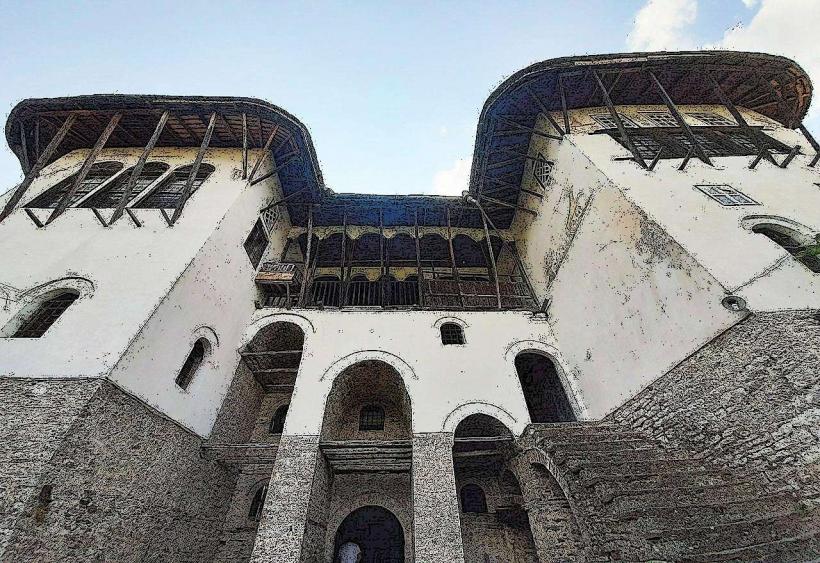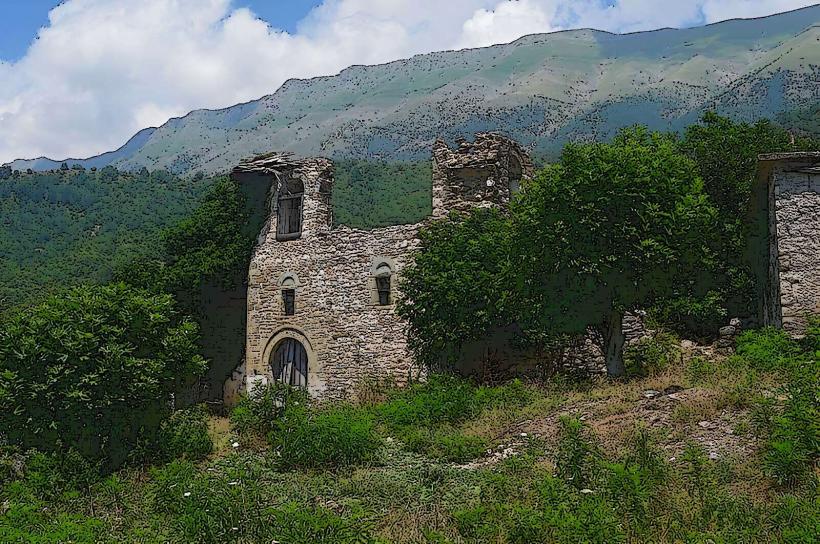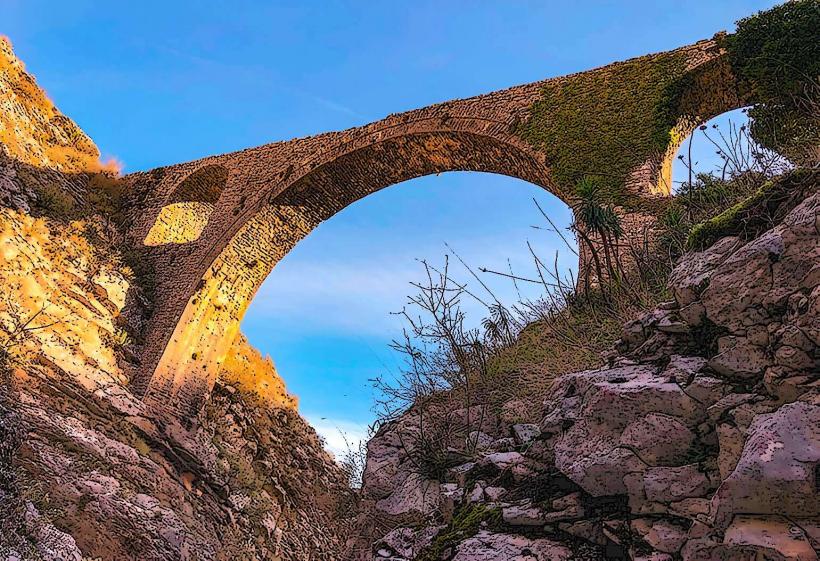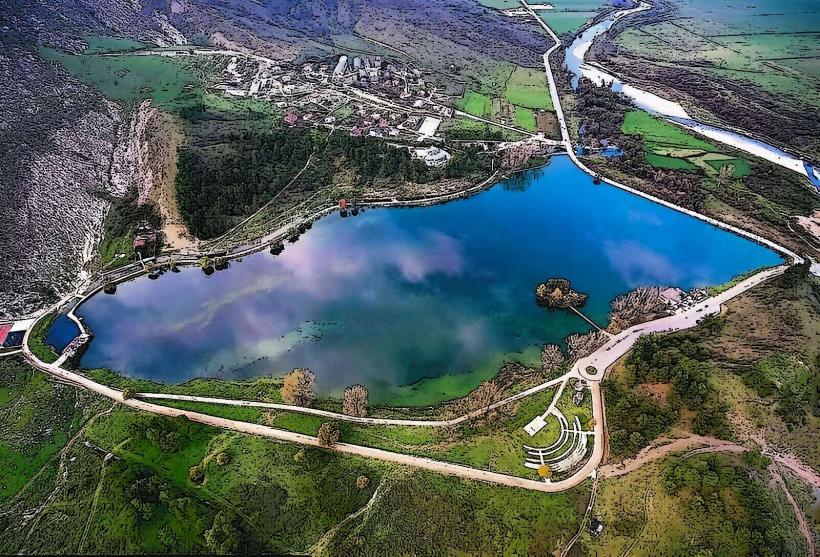Information
Landmark: Antigonea Archaeological ParkCity: Gjirokaster
Country: Albania
Continent: Europe
Antigonea Archaeological Park, Gjirokaster, Albania, Europe
Overview
In southern Albania, the Antigonea Archaeological Park lets you step into the world of an ancient Hellenistic city, where worn stone streets still whisper its history and culture, in turn king Pyrrhus of Epirus founded Antigonea in the 3rd century BCE, raising its stone walls high above the valley, and today it remains a site rich in both archaeological finds and historical significance.Here’s a detailed gaze at the park’s setting: Antigonea rests in the green sweep of the Drino Valley, just outside modern-day Gjirokastër in southern Albania, equally important coordinates: The park sits about 600 meters-1,970 feet-above sea level, perched on a hill called Jermë where the air feels crisp and cool.Accessibility: The site sits about 14 kilometers, or roughly 8.7 miles, from Gjirokastër-just a short drive past rolling hills and stone farmhouses, what’s more you can get there by car or just stroll in-the road is clearly marked, with glowing signs pointing straight to the park, sort of Antigonea was founded in 295 BCE by Pyrrhus of Epirus, the renowned Greek general and statesman who once marched under the fiery Mediterranean sun, as well as he named it for Pyrrhus’ first wife, Antigone, a quiet tribute born of love and steadfast devotion.During the Hellenistic period, the city thrived, its markets buzzing with trade and its halls alive with debate, quickly rising as a major cultural, political, and economic center in the region, in conjunction with perched in the Drino Valley, its position made it easy for traders and messengers to move between Epirus and nearby lands, carrying goods and news along dusty, winding paths.Destruction: In 167 BCE, Roman forces swept through Epirus and leveled the city, leaving its streets silent and empty, furthermore that moment signaled the end of Antigonea as a bustling city, its streets falling silent under the fading light.In the 1960s, archaeologists uncovered the long-lost ruins of Antigonea, brushing centuries of dust from its weathered stones, what’s more researchers keep digging, and each find-a clay pot, a weathered coin-pulls more of its history and everyday life into view.Mind you, City walls rose all around, their towering fortifications still sharp-edged and solid, each one pieced together from massive, weathered polygonal stones, at the same time stretching for more than four kilometers-about two and a half miles-the walls guarded the city, keeping its people protected behind stone worn smooth by centuries of wind.In Antigonea, the Agora bustled as the town’s heart, where traders haggled over olives and neighbors swapped news, and you can still spot the crumbling remains of aged shops and dusty government offices.In the residential quarters, digs uncovered homes with open-air courtyards, a few decorated with colorful mosaics and fitted with surprisingly sophisticated drains, besides sanctuaries and temples filled Antigonea’s lively religious life, with stone altars and shrines devoted to the Greek gods still leaving their mark.Coins, clay pots, worn tools, and bits of jewelry unearthed at the site reveal how the city traded and lived, likewise antigonea offers a vivid glimpse into the refined urban design of the Hellenistic era, from its neatly aligned stone streets to open public squares and sturdy infrastructure.The city’s link to Pyrrhus-one of history’s most famed military commanders-lends it a rich allure, like the echo of marching boots on ancient stone, furthermore cultural Crossroads: Nestled in Epirus, Antigonea absorbed the art and customs of both Greeks and Illyrians, weaving them into a distinct mix-like market stalls where olive oil met carved wooden charms.Today, the park is carefully managed and protected, recognized across Albania as a site of national importance, where ancient stone paths still echo with history, then visitors can wander through the ruins, follow winding stone paths worn smooth by centuries, and take in sweeping views of the Drino Valley, partially Signs and guides share the history behind each structure and artifact, from weathered stone walls to delicate glass shards, meanwhile guided tours come alive with knowledgeable guides who weave in vivid stories-like the clang of timeworn harbor bells-and share insights that bring the city’s history and meaning into sharp focus.Perched on a dramatic cliff with weathered stone ruins, the site is a photographer’s dream-especially when the sky glows gold at sunrise or deepens to crimson at sunset, therefore hiking in the park takes you through towering pines and winding trails that lead to sweeping viewpoints and nearby hidden spots.Just a short wander away, Gjirokastër-nicknamed the “City of Stone”-welcomes you with its steep cobbled streets, Ottoman-era buildings, and the towering Gjirokaster-castle_gjirokaster" class="underline">Gjirokastër Castle, not only that blue Eye (Syri i Kaltër) is a dazzling natural spring where turquoise water swirls like glass, just an hour’s drive from Antigonea, relatively Believe it or not, Drino Valley is packed with ancient ruins and lush, green slopes, a spot that begs to be explored, furthermore the best time to visit is spring, from April to June, when the air feels mild and the hills glow with fresh, green growth.Autumn, from September to October, brings crisp air and thinner crowds, making it a perfect season to wander the site at your own pace, in turn wear comfortable shoes-you’ll be walking over uneven ground, where loose stones crunch underfoot.It seems, Bring a bottle of water and a few snacks-you won’t find many places nearby to grab anything, equally important guides and maps can help you get the most from your trip-whether you hire a local who knows every hidden alley or follow a worn paper map tucked in your pocket.Bring sunscreen and a hat-the site sits out in full sun, and in summer the heat can feel like it’s pressing down on your shoulders, likewise at Antigonea Archaeological Park, visitors step into a living classroom that brings the region’s ancient history and rich cultural heritage into sharp focus, from weathered stone walls to the scent of earth warmed by the sun.They’re working to boost sustainable tourism and keep the site intact-so future visitors can still hear the wind whistle through its timeworn stone walls, in addition step into the Antigonea Archaeological Park and you’re walking straight into Albania’s ancient past, where worn stone paths still echo with centuries-heritage stories, perhaps With its mix of rich history, intriguing archaeological sites, and sweeping views of stone rooftops against green hills, it’s a region history lovers and curious travelers shouldn’t miss when exploring the Gjirokastër region, to boot you might wander past its weathered stone walls or pause to take in the sweeping view of the Drino Valley, but either way, Antigonea leaves you with an experience you won’t forget.
Author: Tourist Landmarks
Date: 2025-10-07

